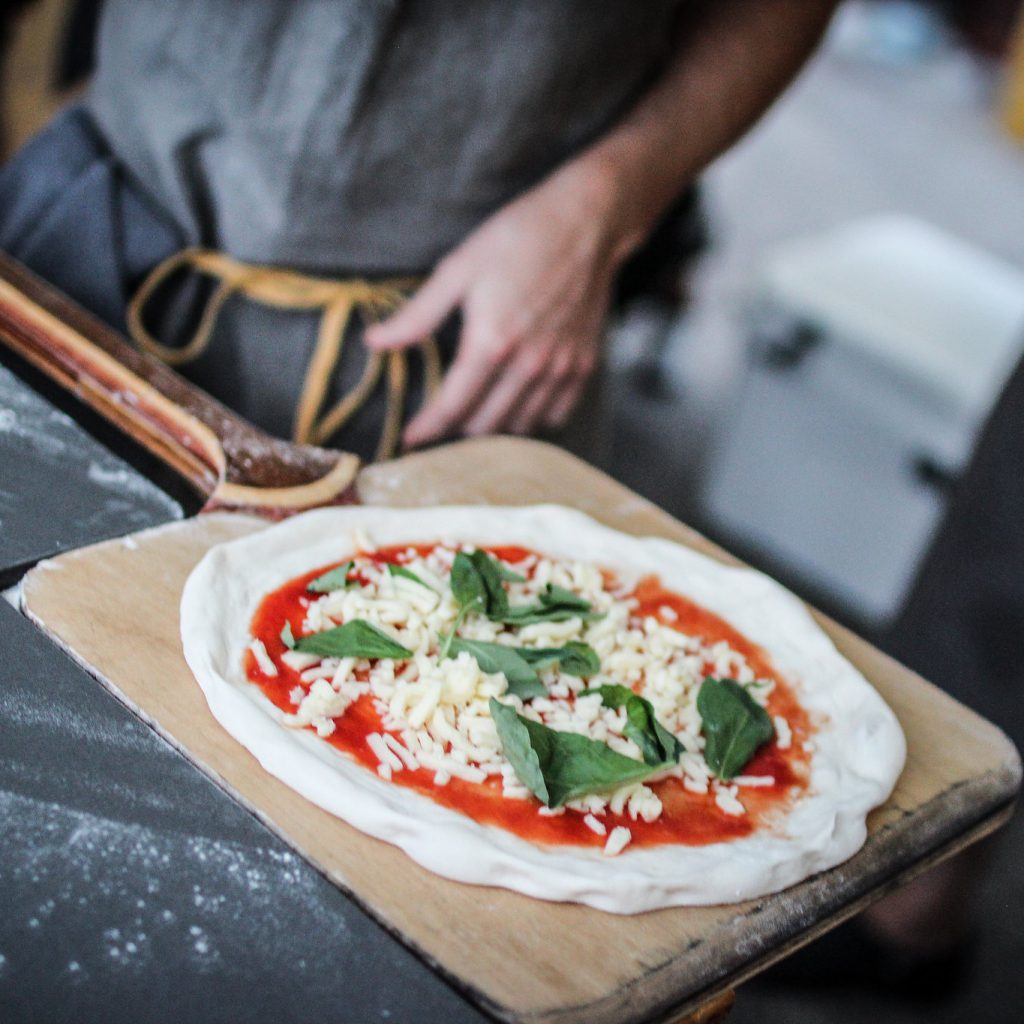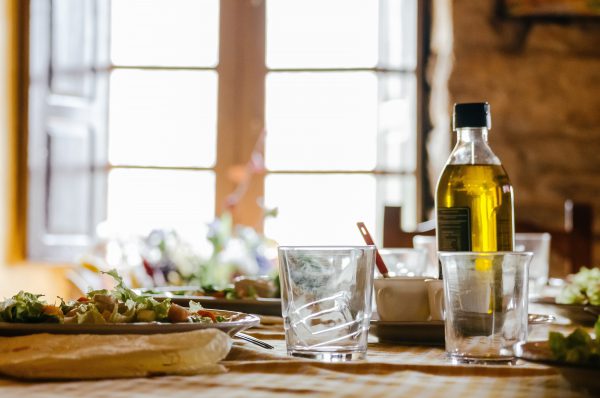Last Updated on October 14, 2022
With its well-known dishes emulsified in fresh tomato, basil, mozzarella, parmesan, or fresh salads with balsamic vinegar, Italian cuisine is inviting for both gourmets and cooks around the world. The good news is, you don’t have to be a master chef to prepare Italian food like a pro — you just need the right cookware. We put together the most needed Italian kitchen tools to cook your favorite Italian dishes.
A Brief Introduction to Italian Cuisine

When we talk about Italian cuisine, the first things that pop in our minds are pizza and pasta. And while those are incredibly delicious dishes, Italian cuisine has so much more to offer. So, let’s start our journey with a brief introduction to Italian cuisine.
The Beginnings
Although the country we know today as Italy was established in the 19th century, we can trace Italian cuisine as far back as the 4th century BC, thanks to dutifully preserved recipes and remnants of ancient kitchenware. One amazing resource is the cookbook of Apicius, a valuable source about food and culture that dates to the first century BC.
Like other aspects of our culture, from music to arts, Italian cuisine has also changed and evolved over the centuries. The seeds of Italian cuisine began to sprout in different city-states after the fall of the Roman Empire. Each region developed unique recipes and cooking techniques for making bread, rice, and pasta dishes, along with other staples of Italian cooking, depending on the climate, the available trading routes, and local produce.
Different Regions in Italy and Their Different Landmark Dishes
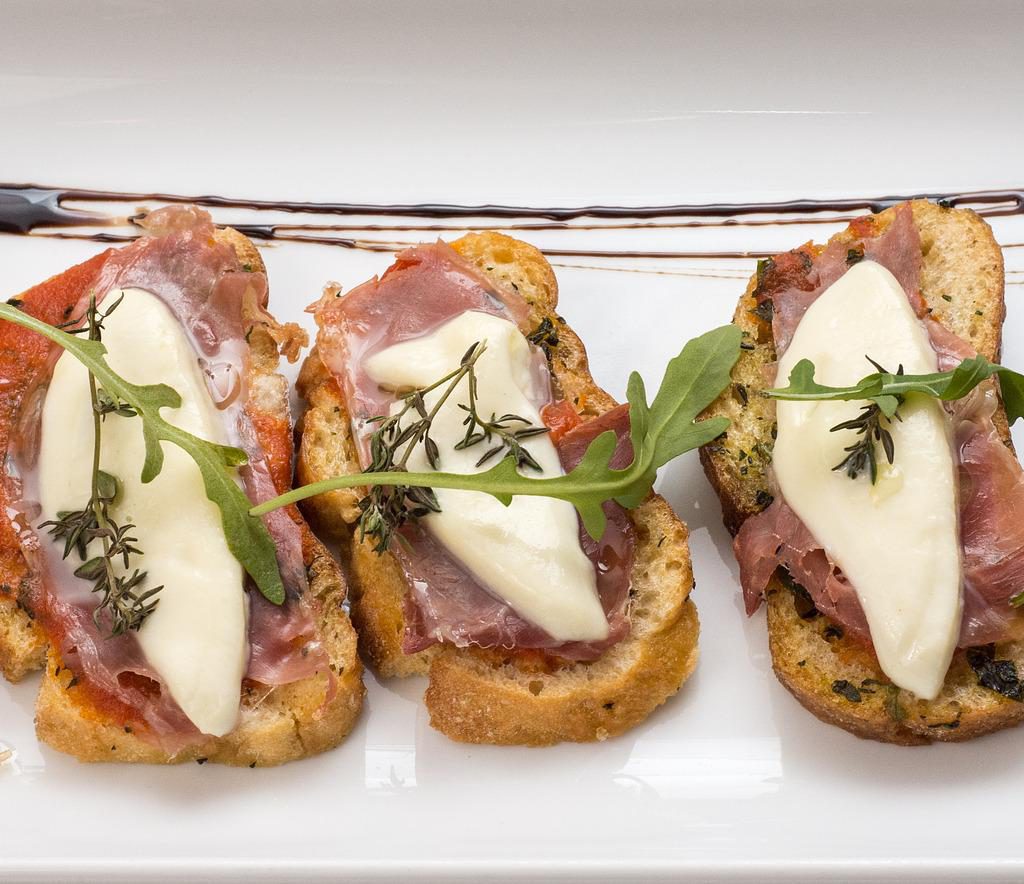
Due to (or thanks to) the varying climate conditions, the proximity to the sea, and the trade routes, each region in Italy has developed its own gastronomy.
The major cities represent the regional cuisines in Italy. For instance, Milan (Northern Italy) is known for its risotto, Trieste (Northeastern Italy) for its multicultural cuisine, such as smoked hams, and the incredible cheese, Bologna (the heart of Italy) for its tortellini and pasta, and Naples (Southern Italy) is most famous for its mouth-watering pizza.
If you’d like to learn more about Italian cuisine, we invite you to take cooking classes in Italy, based on the region you’re interested in.
What Equipment Do Italian Cooks Use?
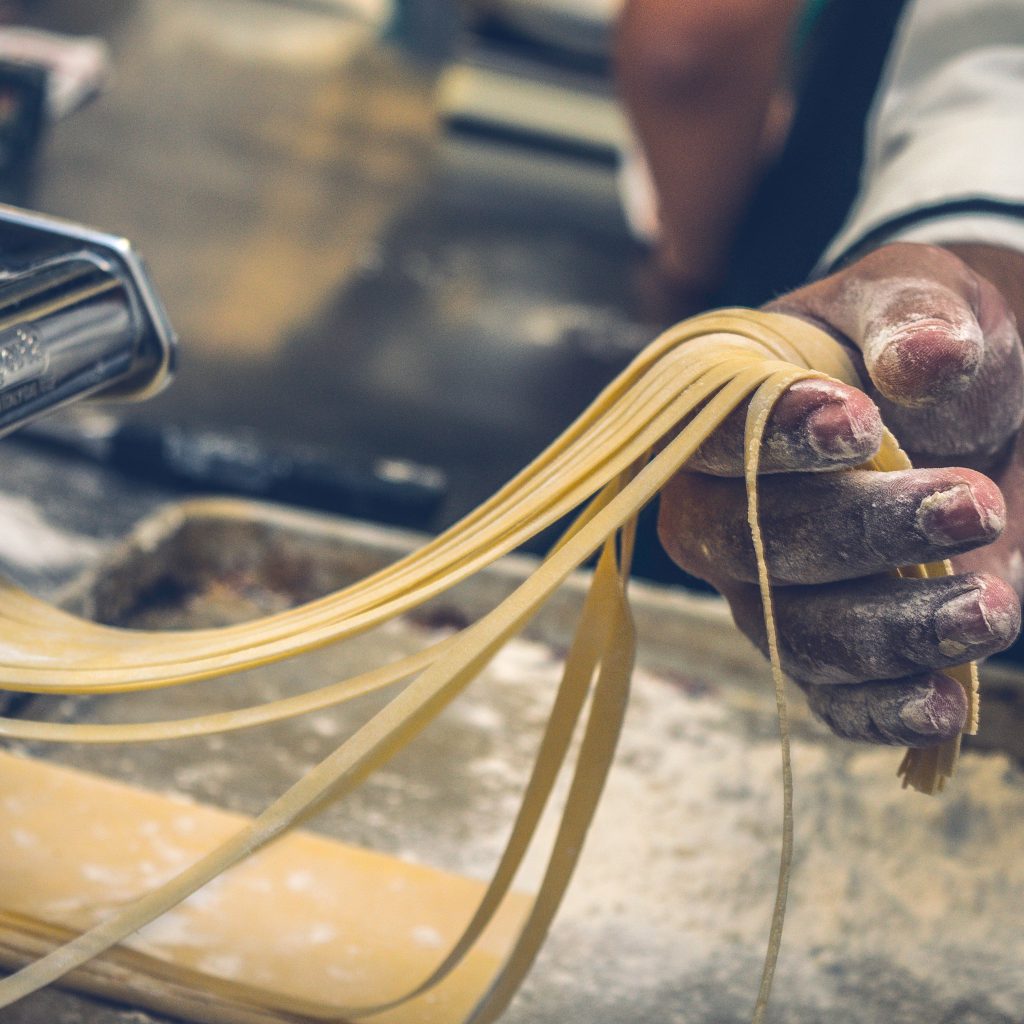
It’s true that dedication and curiosity are the best tools a cook can have but we have to agree that the quality and adequacy of your equipment also matters, especially when it comes to cooking traditional dishes from different cultures, like Italian or Thai cuisine.
Some fixtures of Italian cuisine are already quite popular and have a place in our kitchens, even if we’re not aware of their origins. Others are less common, but they’re still crucial for cooking authentic Italian recipes. So, let’s look at the 10 must-have tools you need to prepare the best Italian dishes.
1. Pasta Pot
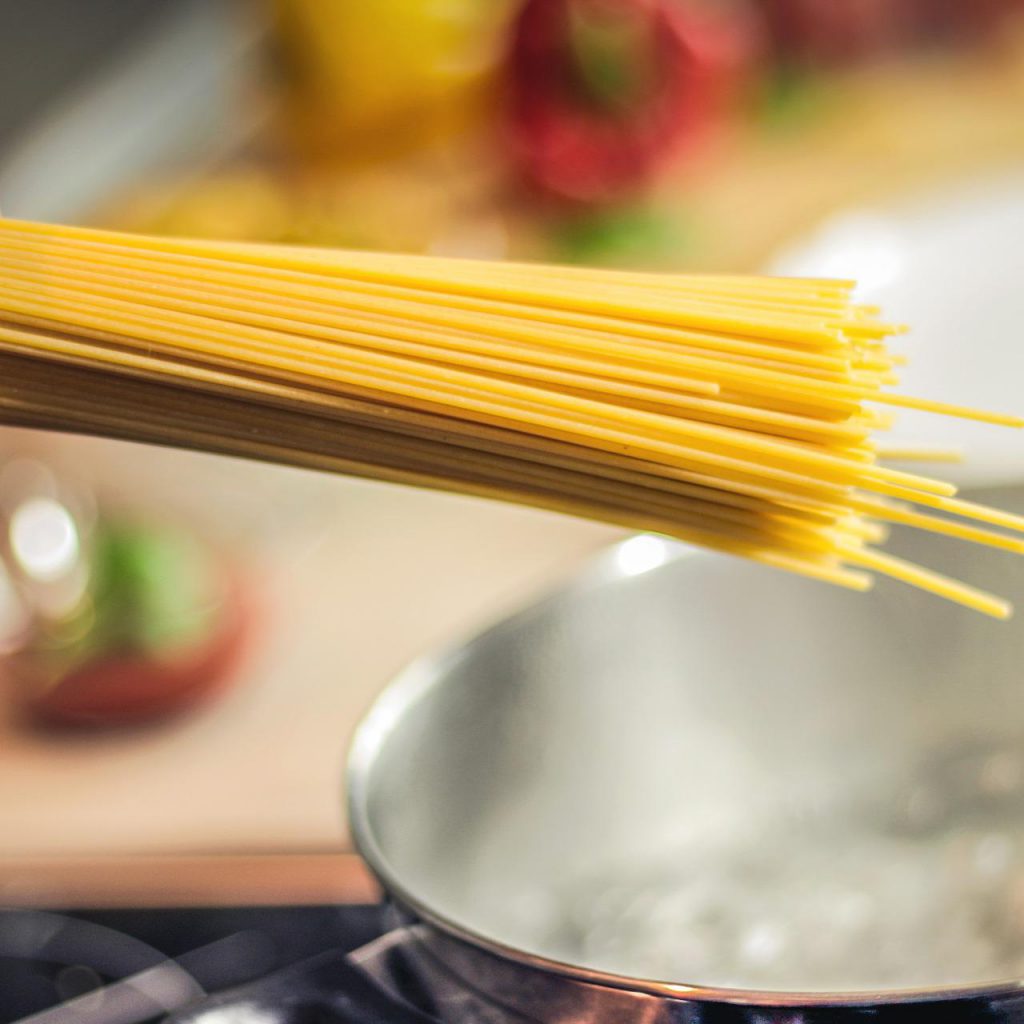
You may not have guessed it, but the outcome of your pasta recipes largely depends on the size and the material of your cookware. Your pasta pot should be large enough to contain your pasta and allow you to stir comfortably, but it shouldn’t be so large that the pasta starch dilutes in the excess water. Starchy cooking water is an essential ingredient for the pasta sauce.
The best type of pot for cooking pasta is an aluminum pan that’s deep and large enough to toss and turn the pasta in a mantecare style. Mantecare is a staple technique of Italian chefs, where you remove your saucepan or pot from the heat, add very cold butter and cheese and stir and toss vigorously to combine the starch, oils, and fats. Mantecare allows the sauce to develop a creamy and even silky texture.
But why aluminum? Well, thanks to its excellent heat conductivity, you can bring your pot to a boil in no time, and the pasta will stay hot enough to perform the mantecare even after you remove it from the heat. It’s harder to find that sweet spot when cooking pasta in a ceramic or stainless steel pot. Plus, mantecare requires vigorous stirring and tossing, so your pot needs to be light enough.
2. Pasta Machine
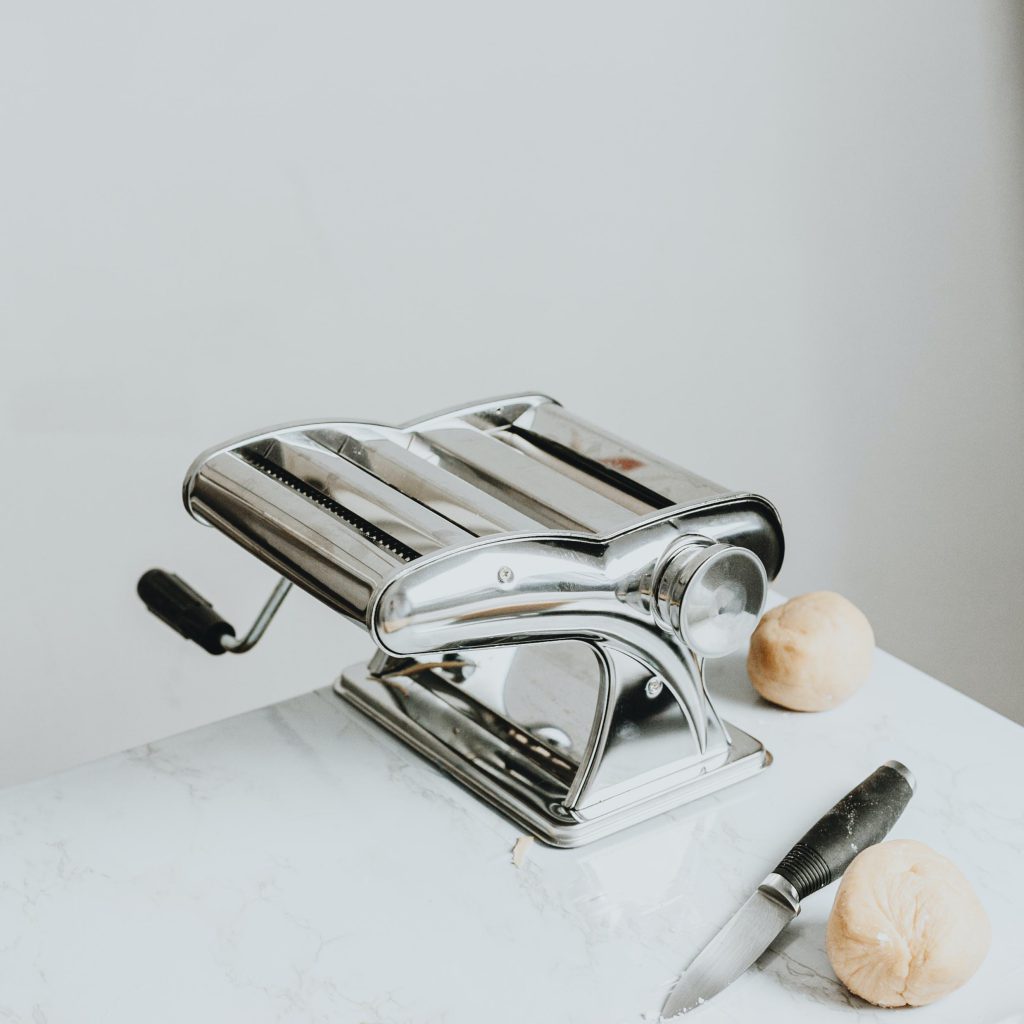
You can easily make your fresh homemade pasta dreams come true with a pasta machine. It’s a tool that allows you to experiment with different doughs and recipes, and make delicious tagliatelle, spaghetti, macaroni, and lasagna at home.
You can get an automatic or manual pasta machine depending on your preference. If you get an automatic model, you simply need to put the ingredients in the right compartment and get your fresh pasta. The manual pasta machines are more affordable, but you have to carefully roll out the pasta dough first, and it may take a while before you learn how to achieve the same thickness every time.
3. Stand Mixer
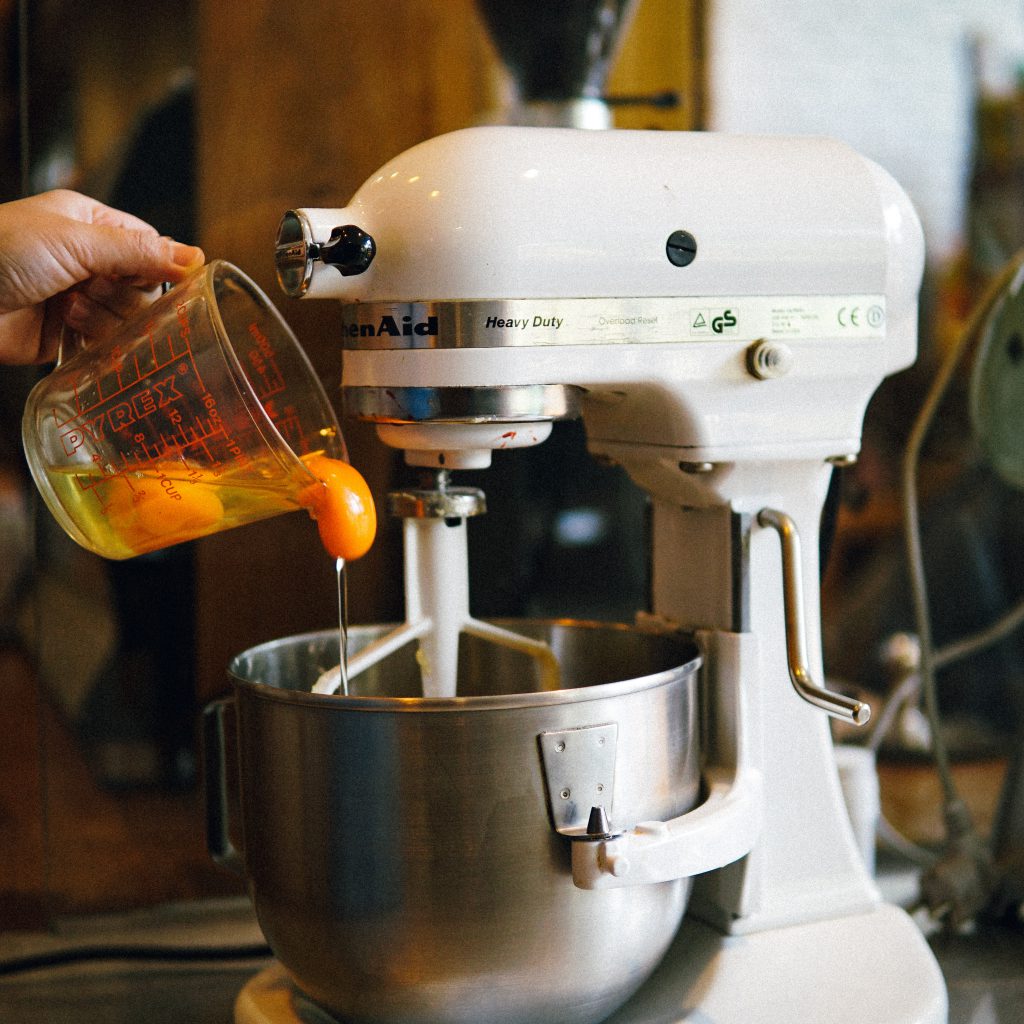
If a pasta machine sounds too specific for your versatile cooking taste, you can get a stand mixer instead. While they’re not exactly traditional, stand mixers can help you master many Italian recipes, from desserts to pasta and sausages.
Owners of stand mixers always swear that they are worth every penny they spend on them. KitchenAid mixers are the most famous on the market, but they are a bit pricey, so feel free to turn to other models with lighter price tags.
With a stand mixer, you can prepare any kind of dough hands-free without making a mess in your kitchen, be it pizza dough, pasta, or ravioli dough. You can also whip cream for tiramisu or canestrelli. Moreover, with some add-ons, you can turn your stand mixer into a pasta machine, sausage grinder and stuffer, or even a gelato machine.
4. Pizza Shovel (Short Wooden Peel)
If you want to make your own pizza at home, you need to build a stone pizza oven in your kitchen. Well, not really, we’re just kidding. You can make pizza in your good old faithful oven. But you may need some help to transfer the uncooked pizza into and out of the oven, as you don’t want the dough that holds the delicious ingredients on top to fall apart in the process.
A wooden pizza peel allows you to easily slide your dough into the oven without burning yourself. It also saves you from messing up your perfectly decorated pizza right when you’re placing it inside.
Thanks to the sloped edges of the wooden peel, your pizza can slide safely into the oven without getting punctured or warped. That’s a catastrophe you wouldn’t want to face right when you’re ready to bake the pizza you’ve poured your time, energy, and love into.
5. Pizza Stone
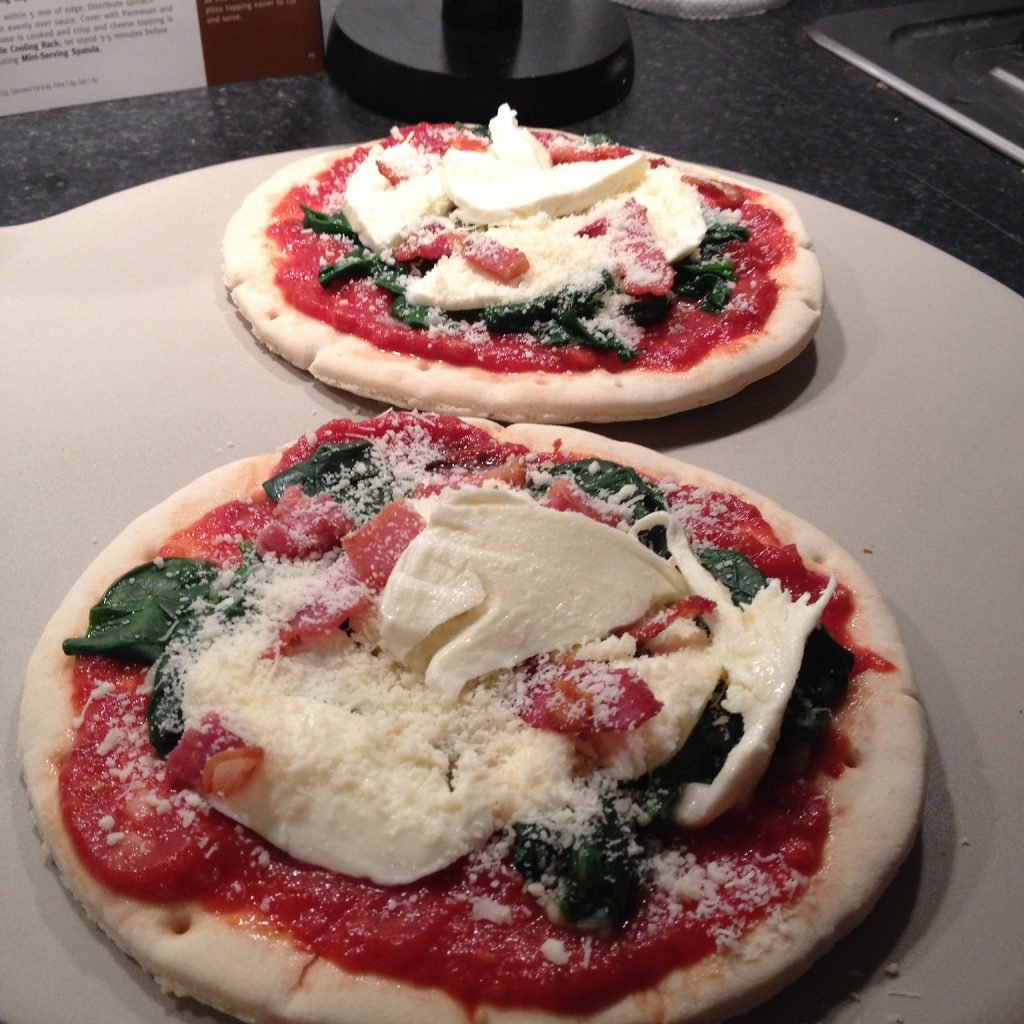
Pizza stones are very popular among home cooks who are passionate about pizza. The stone works as a heat conductor and increases the temperature in the oven locally.
The traditional stone pizza ovens burn wood and reach up to 500°C. Unfortunately, domestic ovens aren’t capable of reaching such temperatures, but you can use a pizza stone to make up for the difference. The stone gradually heats up in the hot oven and stays that way for a long time.
Once you place your pizza on a pizza stone, the heat sears the dough quickly, preventing it from getting soggy from the pizza sauce. Thanks to the searing, you get a dough that’s crispy on the outside and soft on the inside. Moreover, a pizza stone also reduces the baking time.
Your pizza will be puffier, crispier, and more golden with a pizza stone. Just make sure you don’t overcook it, or you’ll end up with a hard dough and burnt toppings.
6. Microplane
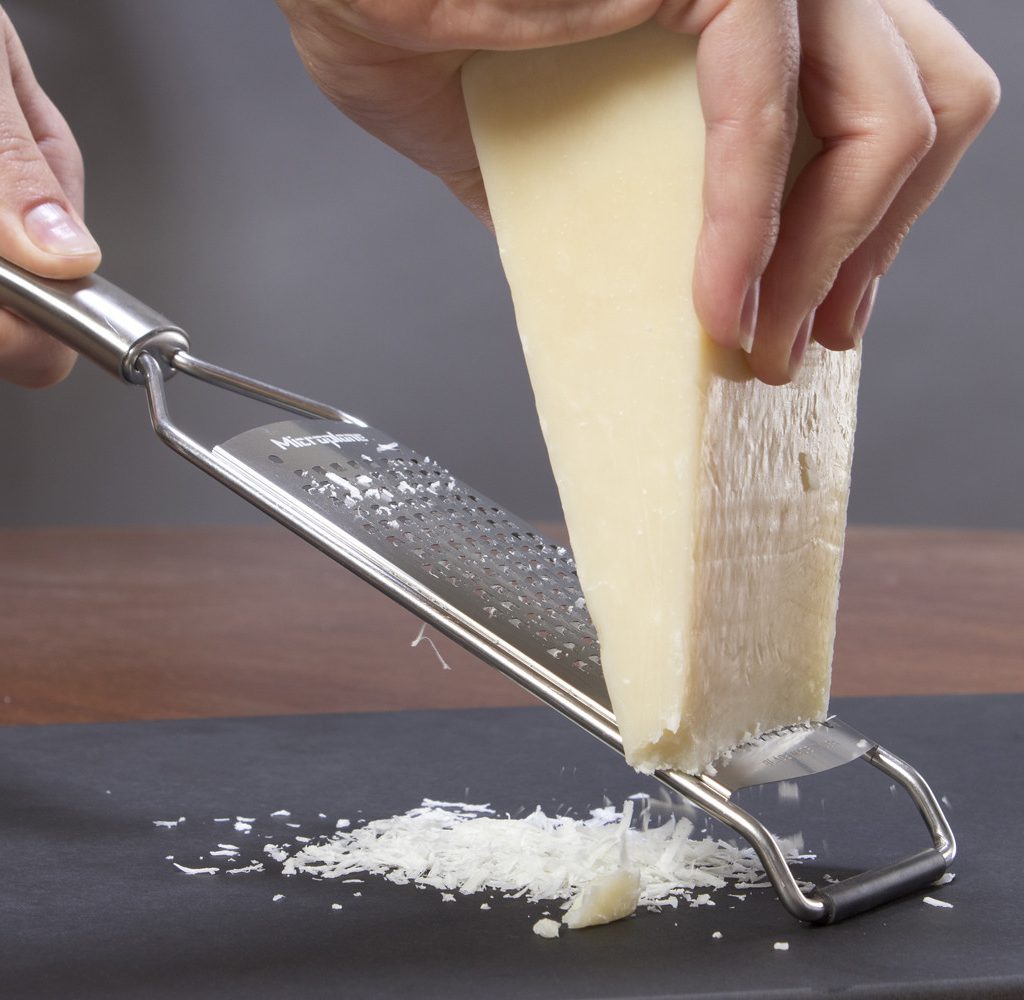 by Didriks
by Didriks
Microplane is the ultimate low-cost kitchen tool that will elevate your dishes instantly, which is why it ended on our list of 12 must-have kitchen tools. Whether you’re cooking Italian dishes or not, a microplane unlocks the superpower of zests that’ll turn your dishes from good to fantastic.
With its ultra-thin and ultra-sharp blades, a microplane is the perfect gadget for zesting citrus fruits, shaving chocolate, mincing garlic and ginger, shredding parmesan, or grinding hard spices like nutmeg or cinnamon to perfection. And since a hint of zest adds a wow factor to a variety of dishes, desserts, salads, and soups, you’ll see and taste the benefits of using one.
You can make some classic Italian gremolata or real limoncello with the help of a microplane. Not to mention that shredding parmesan directly over your pasta with a microplane will make you feel like an Italian chef from Bologna.
7. Mortar and Pestle

Freshly ground herbs and spices are tastier than those sold in powder form. In fact, it’s best to dry-roast whole spices for a few seconds before grinding them yourself to bring out all the flavors and subtleties. The traditional pestle-mortar duo helps you do just that while adding an authentic look and feel to your kitchen.
You’ll be using a lot of fresh herbs, including basil, thyme, oregano, rosemary, sage, fennel, bay leaves, marjoram, and parsley when you’re making Italian recipes. The recipes also call for fresh black pepper, coriander, and mustard seeds. The best way to incorporate these herbs and spices into your dishes is to grind them fresh.
You can also take advantage of a mortar and pestle when making thick and creamy pasta sauces, pastes, and pesto. You can even make your own spice blends, such as Italian seasoning.
8. Enameled Cast Iron Casserole or Dutch Oven
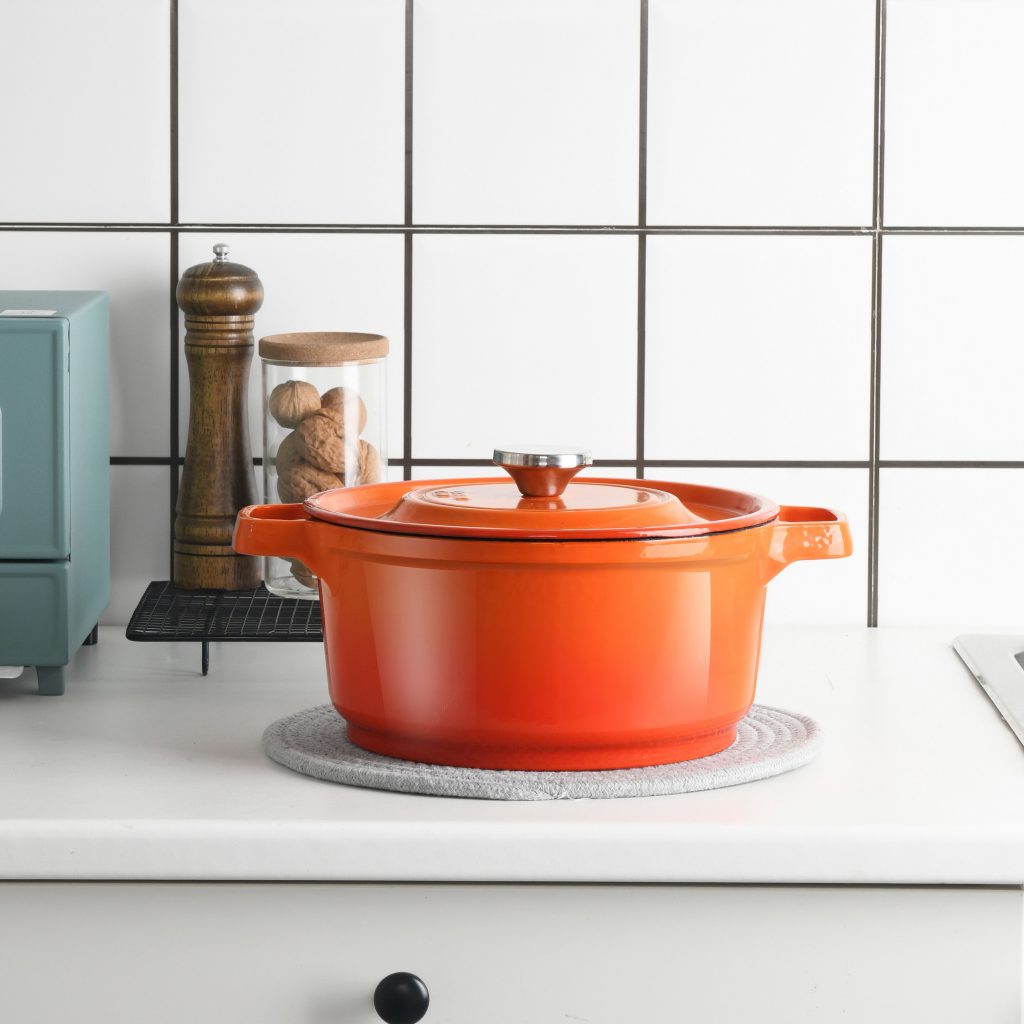
Cast iron casseroles open up a new horizon of recipes, thanks to their capacity to conduct and retain heat, unlike any counterparts. You can use it over the stovetop and put them in the oven or switch between the two at a moment’s notice. Be it for simmering, stewing, or baking, casseroles are the one pot to rule them all.
Pasta and lasagna are like the pop stars of Italian cuisine. But as we talked about above, the cuisine is actually very versatile and has much more to offer if you delve deeper — for instance, try your hand at stews.
Italian cuisine offers many fish, meat, and vegetable stews. For Italian fish stews, you can try brodetto, a simple stew that you’ll find all along Italy’s coastline. There are also vegetarian stews like aubergine caponata, famous chicken stews like pollo alla romana and pollo alla cacciatora, and beef stews like coda alla vaccinara and brasato al barolo.
In short, Italians love a well-made hearty stew, the art of which isn’t that hard to master. All you need is a good casserole that’ll inspire you to try more recipes.
9. Deep Baking Dish
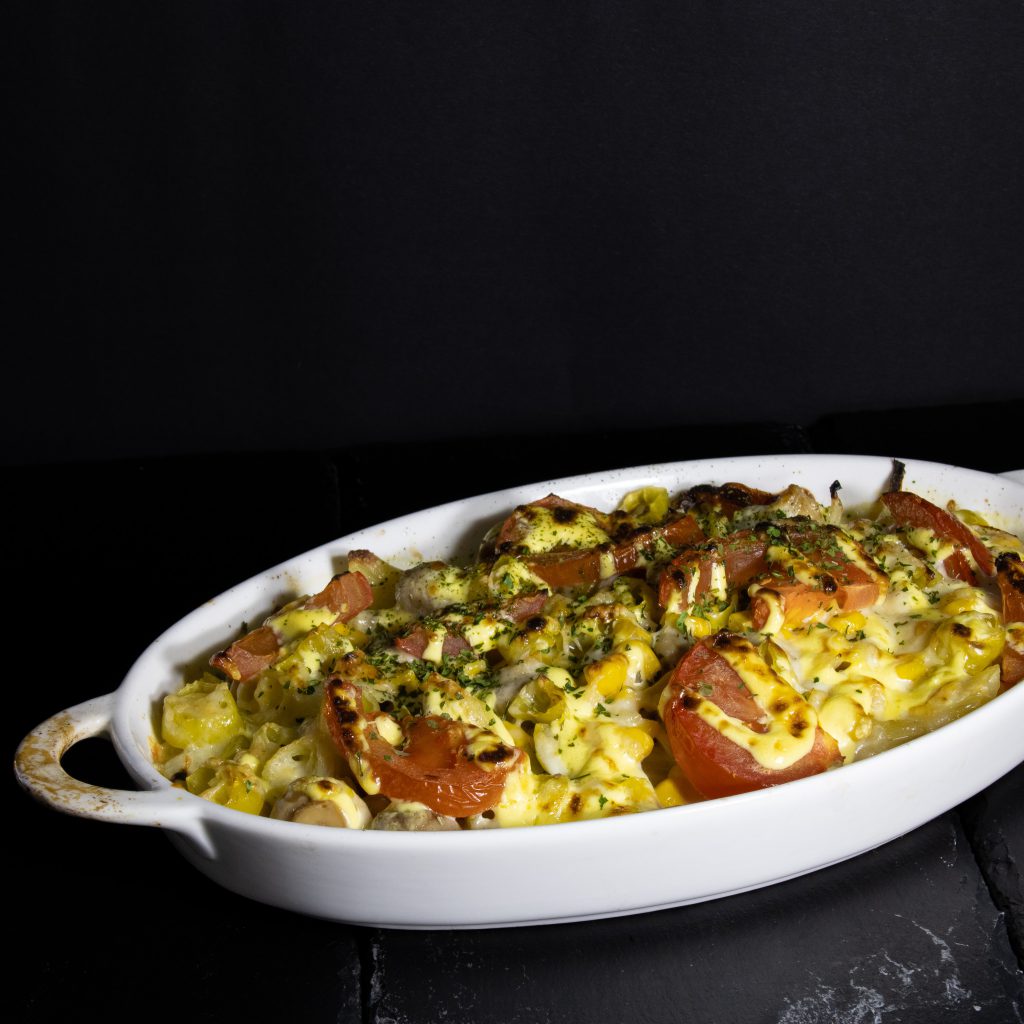
A must for oven-baked dishes! The heavenly smell of garlic coming from the deep baking dish in the oven is enough to take you to Italy.
Whether you want to make some lasagna or a more elaborate recipe like stuffed cannelloni – a tube-shaped dry pasta stuffed with filling and covered with sauce and cheese – you’ll benefit from a deep baking dish.
You can also use them to make simple but tasty recipes like baked ziti, which is simply baked pasta with tomato sauce, sausage, and many kinds of gooey, yummy cheeses — something like lasagna without the fuss.
10. Stovetop Espresso Maker (Moka Pot)
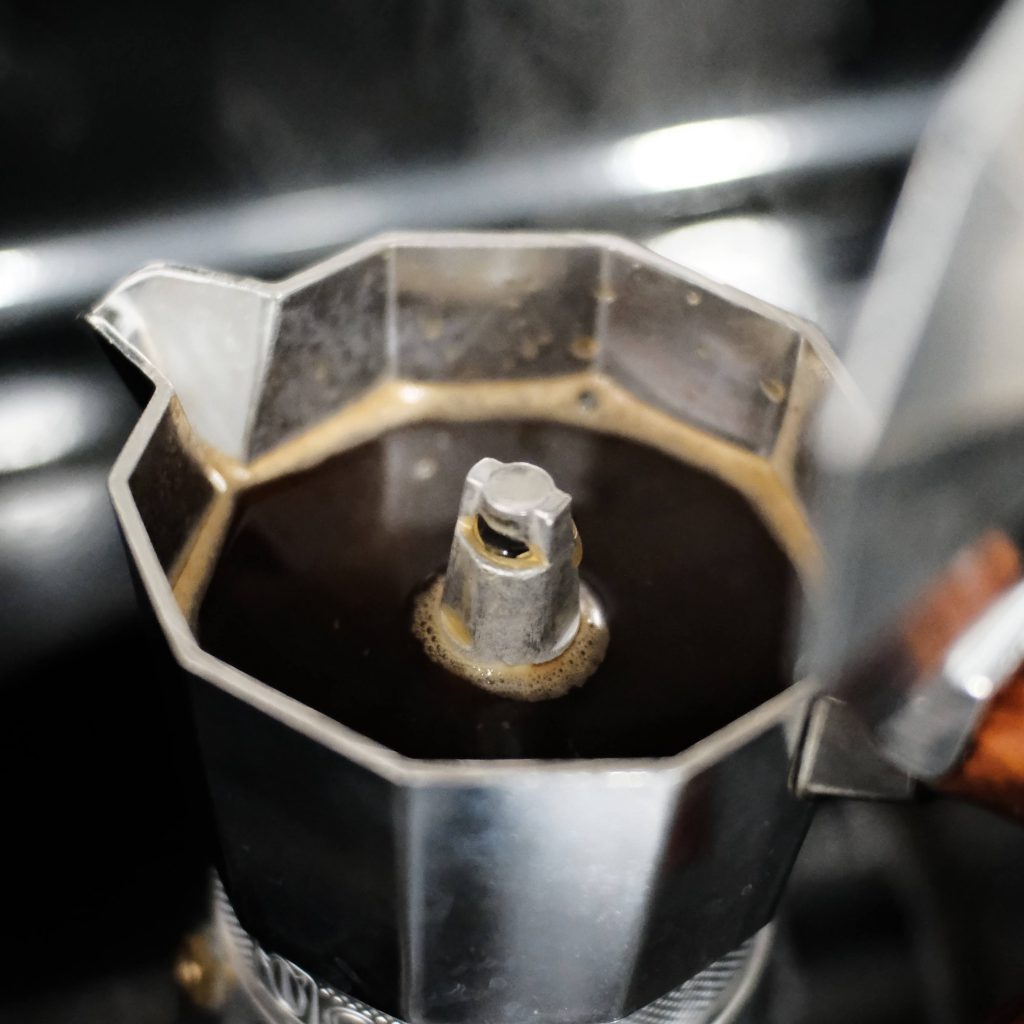
Coffee culture is an intrinsic part of everyday Italian life, and there is a proper way of making and serving Italian coffee.
Italians prefer dark and intense blends to make espresso. They even coined the term Americano to refer to the way the American soldiers drank coffee during World War II — espresso diluted with hot water.
Mocha pots are the landmark of Italian coffee culture. They’re simple tools that let you brew delicious espresso on your stovetop. It’s said that you can find a stovetop espresso maker in 9 out of 10 Italian households. So if you’re a coffee-lover, get one of these little brewers to make delicious espresso right on your stovetop, the Italian style.
Over and Out!
There are well-known Italian dishes like pasta, pizza, and risotto, and then there are lesser-known recipes that take time and practice to master. Either way, you first need to equip yourself with the right tools so that you don’t get discouraged if these recipes don’t turn out as expected.
So stock your kitchen with these Italian cooking essentials, hit the farmers market for fresh, local ingredients, and whip up an Italian food feast for the whole family!


